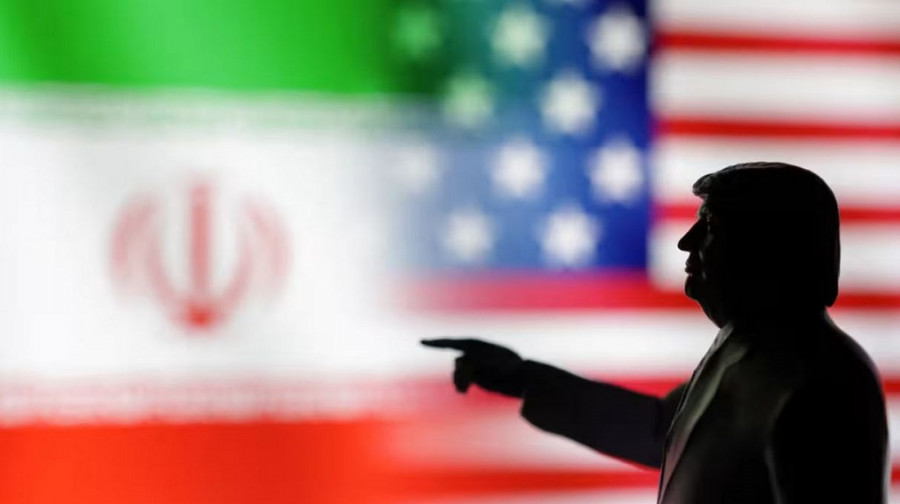The economic calendar for the upcoming week is packed with important releases and events for the EUR/USD pair. While macroeconomic reports such as the PMI and IFO indices, the U.S. Consumer Confidence Index, the Core PCE Price Index, and the final U.S. GDP growth estimate typically strongly influence the EUR/USD pair, their impact may be muted this time. Furthermore, Federal Reserve Chair Jerome Powell and several other Fed officials are scheduled to speak during the week.
Yet all these events will likely be eclipsed by a geopolitical incident on Sunday.
In the early hours of June 22, Donald Trump announced that airstrikes had been carried out against three nuclear sites on Iranian territory. According to him, U.S. forces struck facilities in Fordow, Natanz, and Isfahan.
This marks a precedent—the first instance of a direct military strike on Iranian soil rather than on proxy targets in Iraq or Syria.
Given that the strike occurred over the weekend, we can expect significant volatility in the currency markets on Monday. This is especially true considering that the U.S. launched the attacks just after Trump had made reassuring statements on Friday, claiming he would need up to two weeks to make a decision on the Iranian issue. In the end, the U.S. president acted in direct contradiction to his words, reinforcing his reputation and disproving the so-called "TACO theory" (that "Trump Always Caves Out").
Given Iran's threats to block the Strait of Hormuz, markets will undoubtedly feel the shockwaves of the U.S. strike, particularly the oil market. The Iranian parliament has already voted to block the strait, although the final decision lies with the National Security Council. As Iran's Foreign Minister stated, "The option to block it is not ruled out."
Additionally, members of Iran's Islamic Revolutionary Guard Corps (IRGC) said that the U.S. can expect a response "that will make them regret the strike." Meanwhile, Tehran has vowed to continue attacks on Israel.
Rising oil prices will fuel inflation. The Strait of Hormuz accounts for up to 20% of the world's oil exports (about 15–17 million barrels per day), so even the risk of its closure will push crude prices upward. Recall that 2011–2012, when Iran threatened to close the Strait during a sanctions crisis, Brent crude rose around 15% within a couple of weeks. There is little doubt that an actual closure, especially amid a military conflict, would trigger an even stronger and more abrupt reaction. Some analysts predict Brent could rise above $120–130 per barrel.
Another consequence of the attack is a rise in risk-off sentiment. Safe-haven assets such as the Japanese yen, Swiss franc, and gold will likely benefit. The reaction of the U.S. dollar, however, remains uncertain. Middle East crises have historically reminded investors that the dollar is a safe-haven asset. However, any signs of de-escalation have weighed on the greenback and supported EUR/USD buyers.
However, there are some caveats. First, the unprecedented nature of the situation—the fact that the U.S. directly attacked Iranian territory—introduces a high level of uncertainty. The range of possible scenarios is much broader than even a day ago. This uncertainty does not favor the dollar.
Second, the oil market is unlikely to support the greenback, especially if crude prices hold above $80–85 per barrel. Given the expected inflation surge and ongoing trade conflicts, markets may again raise concerns about stagflation in the U.S. Some analysts have already warned of a "geopolitically induced stagflation" akin to what occurred in the 1970s.
Third, the dollar could come under pressure from domestic political developments. According to Axios, most Congressional Republicans and some pro-Israel Democrats have welcomed the events. Still, opposition is emerging within both parties. One Axios source said Trump needed Congressional approval for "such a provocative use of military force." Several lawmakers have warned of serious legal repercussions for the U.S. president, including impeachment. Congresswoman Alexandria Ocasio-Cortez called Trump's order to bomb Iran "an absolute and clear basis for impeachment." The Senate has also responded, urging the White House to clarify the legal grounds for the strike and its broader objectives in the Iran-Israel conflict.
In summary, the recent developments will undoubtedly spark high market volatility, including in the currency market. But it is far from certain that the dollar will emerge as a beneficiary, even if there is initial short-term demand.
Much will depend on how Iran responds to the U.S. airstrike. According to The Economist, Tehran may choose a symbolic response, as it did five years ago after Trump ordered the killing of Iranian General Qassem Soleimani. In that case, the U.S. would likely adopt an "escalation to de-escalate" strategy—urging Israel to end the war and calling on Iran to return to negotiations for a new nuclear deal.
But there are other, more escalatory paths: the actual blockade of a key oil chokepoint, attacks on U.S. or allied military bases in the Middle East, intensified missile strikes on Israel, and so on. Such developments could result in a broader and prolonged conflict with unpredictable consequences.
For now, one thing is certain: the stakes in this geopolitical game are very high. This means that major dollar pairs will start the new trading week in a zone of price turbulence. And the EUR/USD pair will be no exception.













